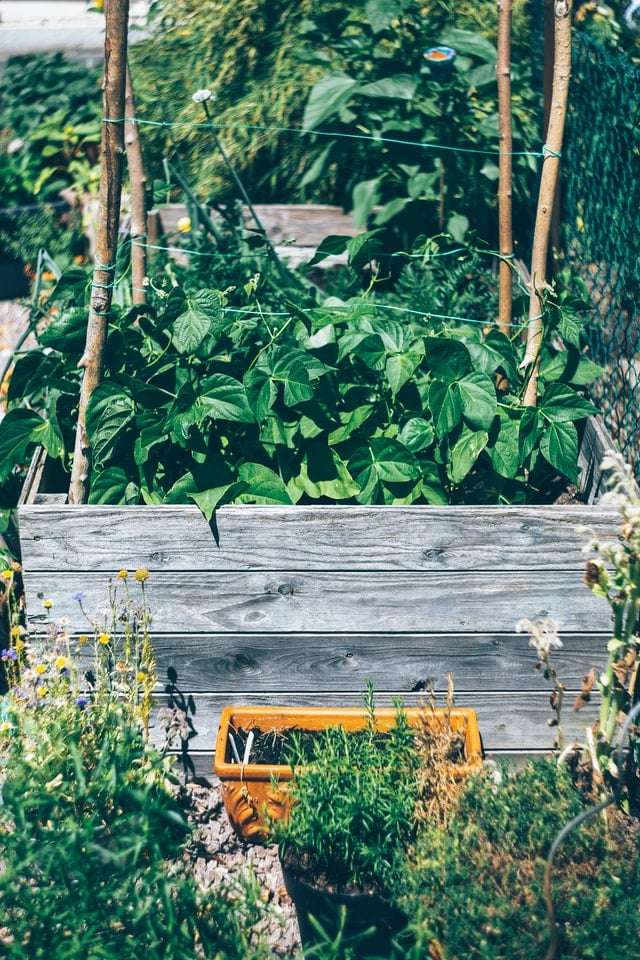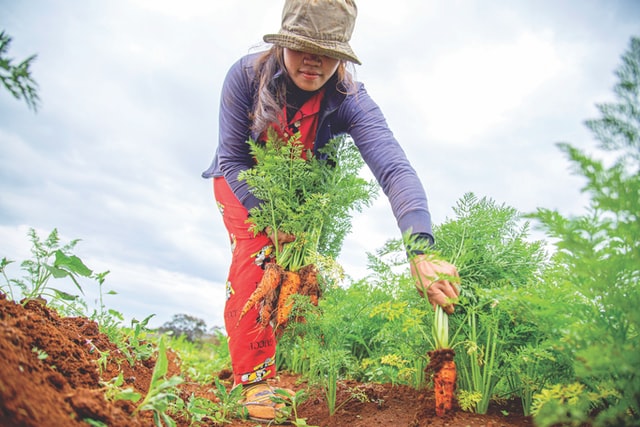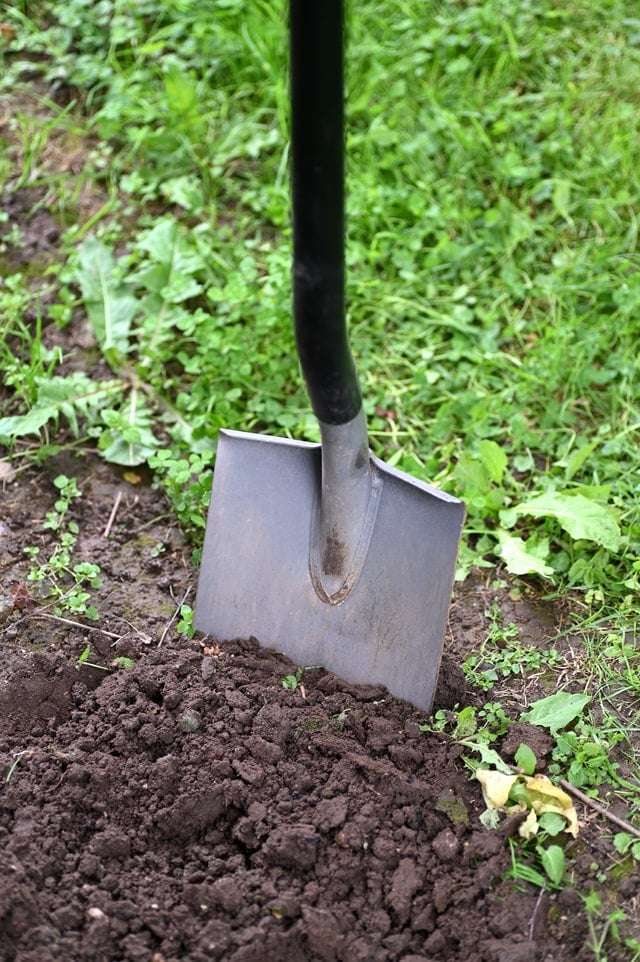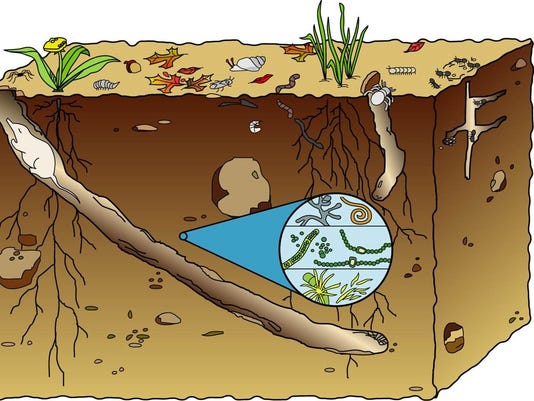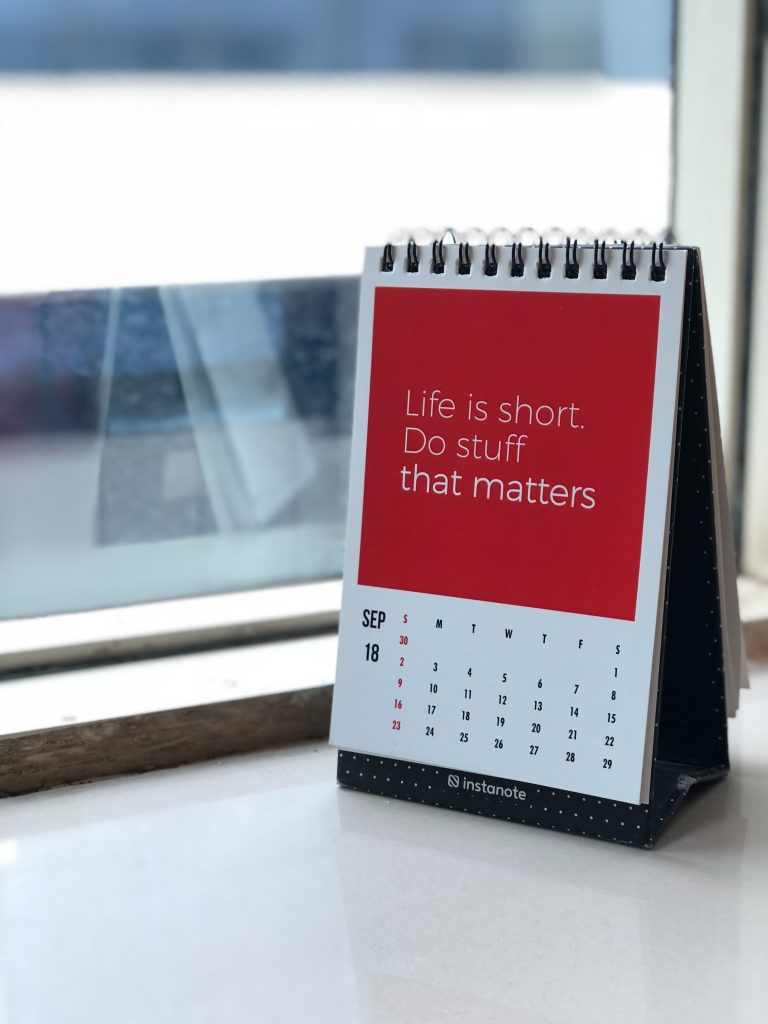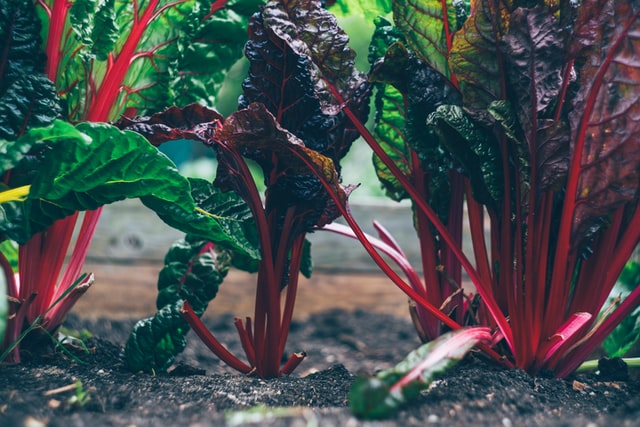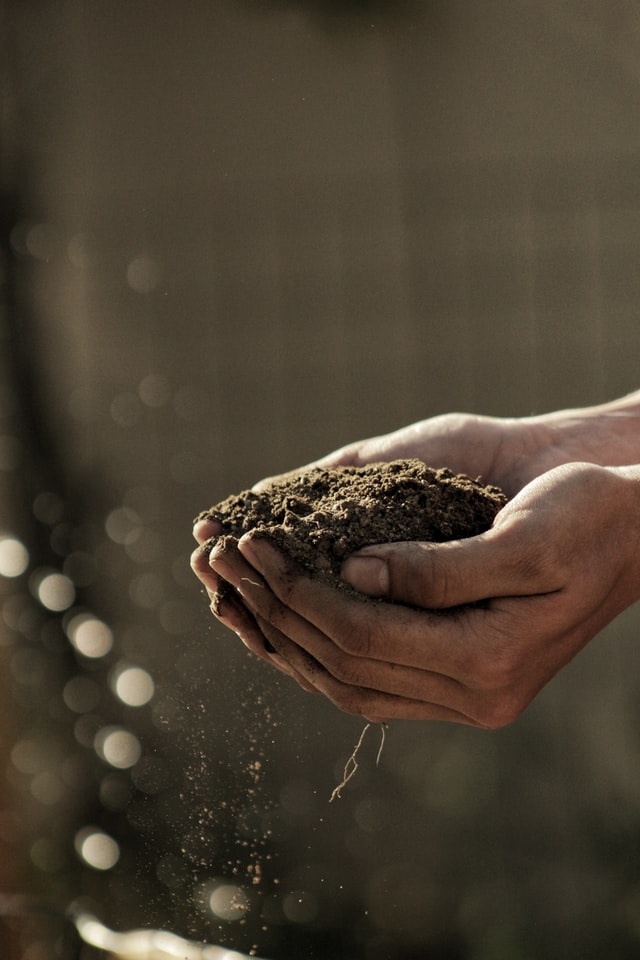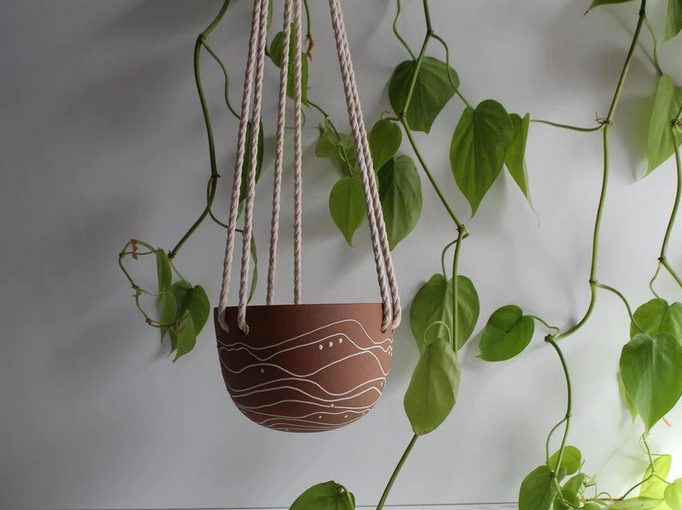Do you long for activities that get them outdoors and reconnecting with Mother Earth? Gardening is a natural way to get exercise and some natural Vitamin D, and it’s an activity the entire family can enjoy together. Whether Spring is bringing you to the garden for the first time or you’re back for a return engagement, follow these tips to create a sustainable, eco-friendly garden.
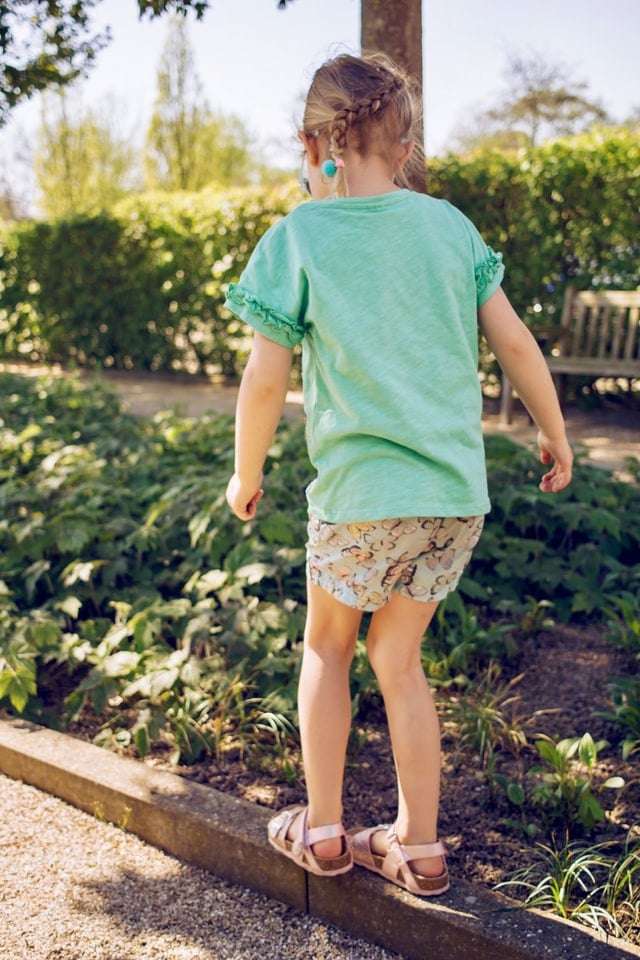
What Makes an Eco-Friendly Garden?
If gardens grow plants and plants are organic, then shouldn’t all gardens be eco-friendly and organic? If only things were so simple.
An eco-friendly garden:
- Makes use of the natural climate and soil.
- Avoids chemical fertilizers.
- Minimizes pesticides, fungicides, and herbicides.
- Encourages native plants.
- Uses minimal supplemental water.
So, a lush rose garden in the middle of the desert would NOT be an eco-friendly garden. However, there’s no reason a rose garden in Rose, Georgia can’t be eco-friendly. It’s all about achieving just the right balance.
Eco-friendly gardening is about picking the right plants and following the right horticultural practices. You don’t have to have an organic garden to have an eco-friendly garden. And it doesn’t need to cost an arm and a leg, either. Many of the materials in an eco-friendly garden are probably already around the house.
Benefits of an Eco-Friendly Garden
Whether you enjoy growing flowers for cutting, vegetables for the kitchen, or just want to create a place to escape, unwind, and relax, you (and the planet!) will benefit from an eco-friendly garden.
Provides higher quality produce
The vegetables, greens, and herbs you grow in your garden may not look as beautiful as the ones in the big chain grocery store, but they will be higher quality.
For example, tomatoes in the store are picked green and are bred to survive the rigors of transport. So, they literally have thick skins and come from high-yielding plants. Their nutritional value begins to deteriorate the moment they are plucked from the vine and headed to your store.
When you grow at home in an eco-friendly garden, you can grow heirloom varieties that may not transport well but taste so much better. And because they taste better, you will eat more of them. And since they only need travel from your garden to your kitchen, the nutritional value doesn’t deteriorate in transport.
Conserves soil and water
An eco-friendly garden is kind to the Earth. You use limited supplemental water. Instead, you rely on natural rainfall and water collected in rain barrels. A municipal water supply or irrigation system is the final resort for water.
When you follow eco-conscious gardening practices, you add organic matter back into the soil. So, you enrich the soil beyond what a plant takes away. Soil is living (more on that in a bit) and eco-friendly gardening practices leave the soil better than when you started. The roots of plants also hold soil in place, so you prevent erosion.
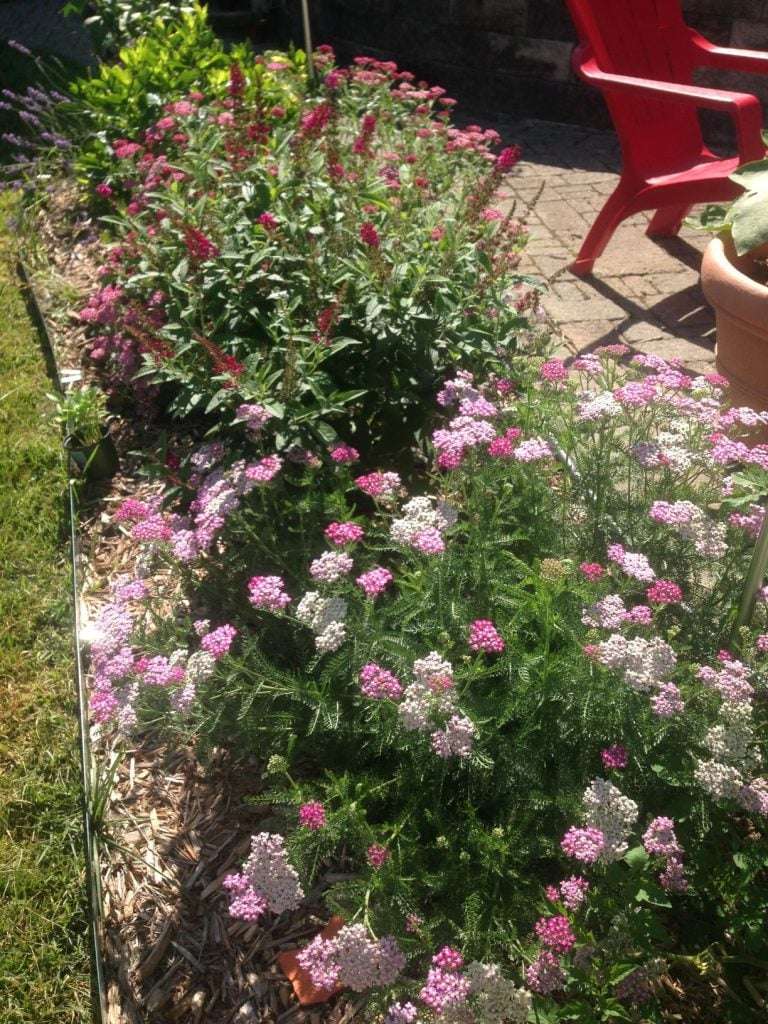
Supports native pollinators
The population of native bees, insects, butterflies, and other pollinators is on the decline. Even if you don’t like bees or flying insects like wasps, you depend on them for food. One in three of every bites of food you eat depends on the hard work of native pollinators. No, they don’t drive DoorDash or UberEats, but they deliver food by pollinating fruits and vegetables. Many plants require cross-pollination (pollen from one plant transferring to another) to produce fruit. That pollen isn’t going to move itself, and you can’t depend solely on the wind. Some of the fruits and vegetables that depend on pollinators in order to grow properly include:
- Squash
- cucumbers
- melons
- pears
- corn
- blueberries
- tomatillos
Because the plants in your eco-friendly garden aren’t treated with toxic chemicals, you won’t inadvertently kill these essential pollinators.
Reduces waste in landfills
Eco-friendly gardens depend on compost to feed the soil. Composting keeps tons of yard debris and food waste out of our landfills (where it will take up space for eternity and never decompose). Instead, the eco-friendly gardener controls the decomposition and uses it to their advantage to enrich the soil and feed their plants.
Building the Soil in an Eco-Friendly Garden
One of the most important concepts to grasp in eco-friendly gardening is that soil is alive.
Yep – Good, fertile soil is not inert, it is alive. Dirt is dead, but soil is alive.
Source: USDA
What’s the difference? Soil is an entire ecosystem just sitting there on your shovel. Soil contains:
- Fungi
- Worms
- Decaying plant matter
- Insects
- And various microorganisms.
The particles are all different sizes, creating loose pockets in which roots can grow and water can move.
The difference between dirt (such as clay or sand) and soil is the presence of humus, or compost. This is the decaying organic matter you feed dirt to create soil.
Eco-friendly gardens don’t need high levels of chemical fertilizers because plants can get the nutrients they need to grow directly from the soil around them. And because the plants are well-fed, they are healthy. This makes them better equipped to fend off insects and disease so you need fewer insecticides and fungicides.
The best way to add compost is to create it yourself. If that’s not possible, you can buy compost and composted manure (like Black Kow) and mix it into your dirt until you have a loose and crumbly mixture.
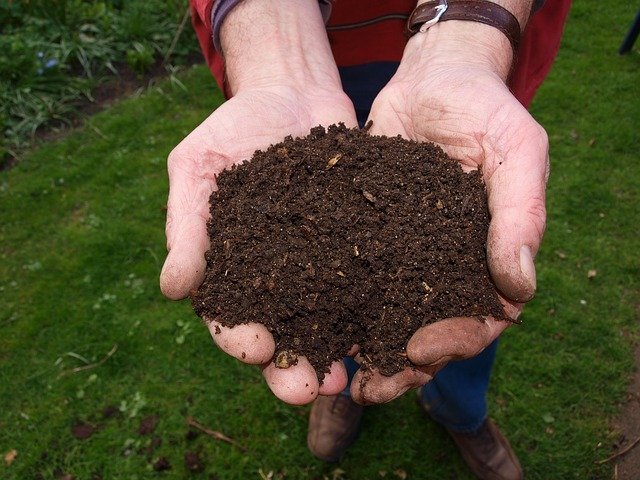
Composting 101
Composting is a controlled decomposition. To get started and to keep it going, you mix carbon and nitrogen in a 2 to 1 ratio. That means for every 2 carbons, you add 1 nitrogen.
And just where do these carbons and nitrogens come from? Just look around you. The carbon comes from the dead leaves and garden debris in the yard. It includes small twigs from under the trees, that straw you bought for decorations last Halloween, yesterday’s newspaper (but not the glossy ad sheets), and even the latest cardboard box from Amazon. These carbons make up the “brown” layer of your compost pile. Nitrogen, on the other hand, comes from grass clippings, fresh plant material (like those vines you just trimmed), and kitchen scraps like potato peels, carrot tops, coffee grounds, and eggshells. These make up the “green” layer.
Set aside a small plot of land and encircle it with chicken wire or fence planks. If you don’t have a spot to create a compost pile, invest in a compost tumbler. Either way, place your “brown” layer of carbon on the bottom and then your “green” layer of nitrogen on the top. Remember for every 2 parts of carbon you’ll need to add 1 part nitrogen. Sprinkle with a little water and let nature get to work. Periodically water and tumble or turn your pile to hasten the decomposition process.
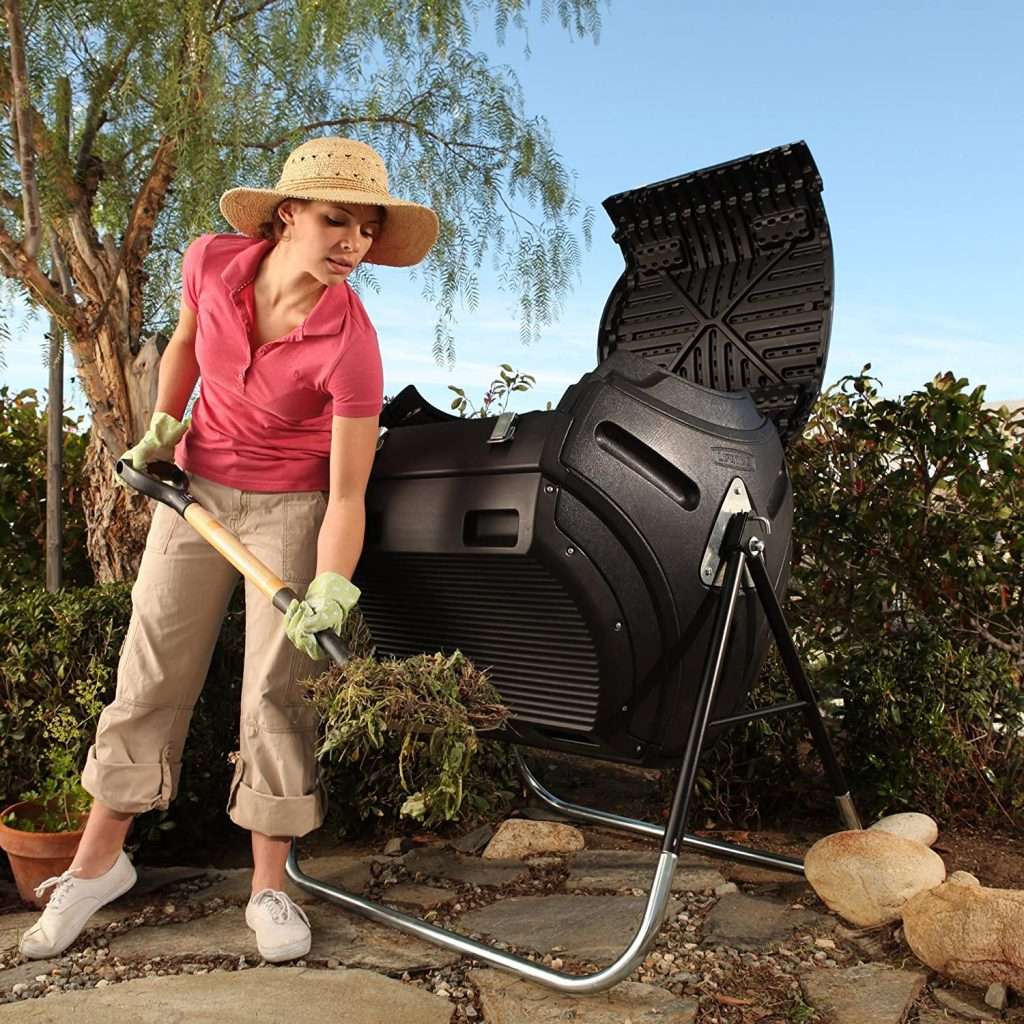
The center of your compost pile should get hot. That’s a good thing! You need that heat to kill the nasties like the eggs of parasites while promoting an environment for good aerobic bacteria. Turning the pile keeps moving material into the middle where it’s warm. Studies by the University of Washington show that in the beginning, you want a moisture content of 30% to 50% to kickstart decomposition and to encourage a core temperature of 135° -160° Fahrenheit.
You can safely add the manure of vegetarian animals to your compost pile. That’s manure from rabbits, horses, or cows. Only add manure once your pile has achieved a core temperature of 135°F. Never add manure from carnivores or omnivores, as it contains dangerous bacteria. You can safely add composted cow manure like Black Kow because it has already broken down the harmful bacteria.
Two Dates Every Gardener Knows
Unless you live in Puerto Rico, Hawaii, the Rio Grande Valley of Texas or Miami, Florida and south there are two days you must know.
You must know the first frost date and the last frost date. This determines your growing season. If you don’t know these dates, you can use this Frost Date Look-Up to check by ZIP code.
Some plants like kale, cabbage, cauliflower, and pansies can take a little cold weather. Others like zinnias, peppers, and tomatoes like it to be completely frost-free and the soil to be warm before they grow.
If you live in an area with a short growing season, you probably won’t be able to grow vegetables that take a long time to mature. For example, if you live in Afton, Michigan, you have a little over 100 growing days. It takes a watermelon seed at least 80 days from germination to produce fruit and the soil temperature must be 74°F for the seed to germinate so you really don’t have enough time to grow watermelons in Afton. But radishes only take 30 days, and the soil can be much cooler. So, make sure you know the length of your growing season before you buy seeds or plants.
Growing Eco-friendly Vegetables and Flowers
Growing your own vegetables is fun. And growing eco-friendly vegetables is smart. Because you want to minimize the use of pesticides and supplemental water, it’s a good idea to stick with growing plants suited for your area. For example, basil, okra, zinnias, moss roses, and pentas like it hot. Tomatoes won’t ripen once the daytime temperature is consistently in the 90’s. So do your research before you do your buying.
Mulch generously
Eco-friendly gardens maintain a mulch layer that is 2 to 3 inches deep. A thinner mulch layer doesn’t do much good and a thicker layer can prevent oxygen from reach the soil.
Why use mulch? Well, mulch will:
- Keep soil cool in hot areas
- Conserve water
- Enrich the soil
Today, colored mulches are very popular. But that doesn’t make them eco-friendly. The dyes used to create the black, red, or brown color can be toxic to the microorganisms in the soil. Instead opt for natural pine bark or pine bark chips, straw, or eucalyptus wood.
You might think rubber mulch is eco-friendly because it uses recycled materials. Well, it’s time to think again. Rubber mulch is not eco-friendly. It leaches chemicals into your living soil. Your plants will take those chemicals up and if you are eating your garden, you’re eating that rubber mulch. It can also inhibit the growth of those good bacteria you want.
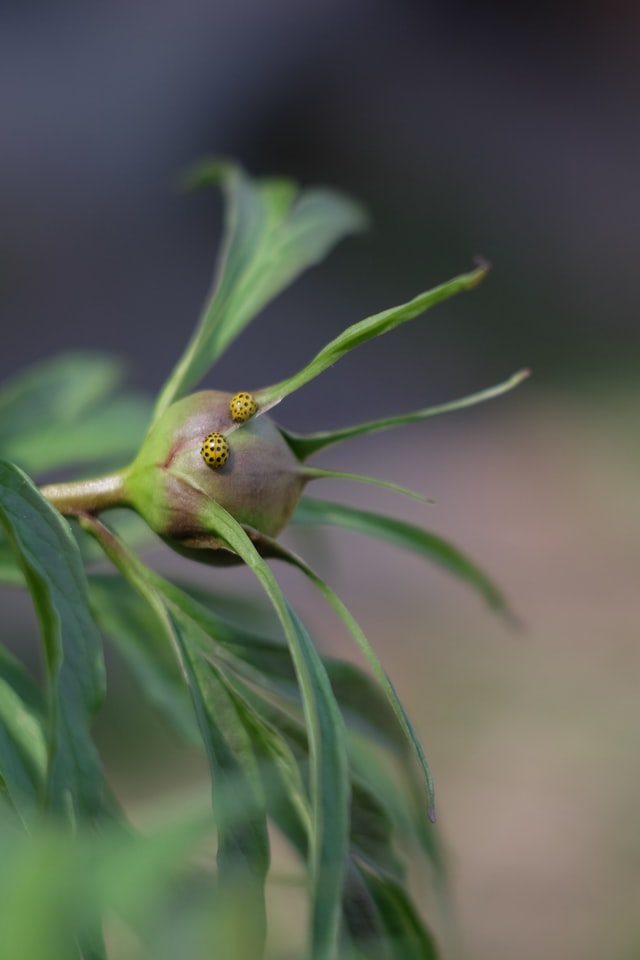
Manage pests wisely
Even the healthiest gardens will have pests from time to time. Luckily, healthy plants are better able to fend off damage from predators. But, if pests like aphids, white flies, and various caterpillars become a problem, reach for a less toxic solution first. Chemical insecticides contribute to insecticide-resistant strains and can kill honeybees and other pollinators. Try these methods first:
- Manual removal works for cabbage worms, Japanese Beetles, and aphids. Pluck cabbage worms from your kale, broccoli, cauliflower and other brassica plants and relocate them. Japanese beetles and aphids can be removed with a strong stream of water from the garden hose.
- Garlic/pepper spray keeps away rabbits and deer and will not harm the plants. Here’s how to make it at home:
- Crush 5 cloves of garlic and mix with one gallon of water and 1 teaspoon of red pepper flakes.
- Let sit in the sunshine for 2 days to create a “tea”.
- Strain the solids and place in spray bottles or a pump sprayer.
- Spray area where rabbits, deer, and other mammals are feasting.
- Then spray the plants. Contrary to popular belief, this will not deter insects – they are not affected by the burning sensation caused by the peppers or the smell of garlic. But it will keep mammals at bay.
- Neem oil is produced by the neem tree. It is the Swiss army knife of pest and disease control for eco-friendly gardeners. Mix Neem oil and water and treat aphids, whiteflies, mealybugs, and a host of other garden pests. The same Neem oil and water mixture will also knock back powdery mildew, black spot, and sooty mold.
- Diatomaceous earth (DE) sprinkled on the soil around your plants will deter slugs and snails. Diatoms are tiny aquatic creatures covered in a silica shell. Their bodies are crushed to create DE. This looks like a fine, white powder to you, but it is razor sharp to small creatures. Slugs and snails won’t crawl over DE and survive to tell the tale. Use DE with caution, as it can kill beneficial insects and garden visitors as well as pests. A more eco-friendly option would be a beer trap for slugs and snails.
Natural Fertilizers
Feeding the soil feeds your plants. But growing fruits, vegetables, and flowers is hard work. Your plants will appreciate a little snack throughout the growing season. But, before you grab for that bag of fertilizer, look at more eco-friendly options for feeding your garden. Some of them are probably already in your kitchen.
Egg shells
Egg shells add calcium and nitrogen to the soil. By now you know nitrogen is important, that’s why it’s a component of compost. But eggshells also add calcium. Calcium is necessary to prevent blossom end rot (BRE). BRE is most common with tomatoes, eggplants, peppers, and squash. It looks like a flat, brown rotten spot at the blossom end of the vegetable. As the vegetable fruit grows, so does the rotten spot. Cell walls need calcium and BRE is the result of insufficient calcium. Instead of buying calcium, just add eggshells to the garden. Old timers crush an eggshell into the planting hole before putting their transplant in the ground.
Coffee grounds
The leftover grounds from your morning coffee are a great source of nitrogen. Sprinkle coffee grounds around your plants and add coffee grounds to your compost pile.
When plants start to show signs of nitrogen deficiency (pale green or yellow-green leaves) water them with your coffee! Now, plants don’t take their coffee with cream and sugar, but cooled, black coffee provides a quick shot of nitrogen. Now coffee is acidic, so it will lower the pH of your soil. So only add coffee grounds or water plants with diluted coffee once a week.
Nitrogen plays an important role in photosynthesis (how plants convert sunlight to food) that’s why nitrogen-deficient plants lack chlorophyll. So, perk them up with a pick-me-up cup of diluted coffee.
Bone meal
Bone meal is the by-product of slaughterhouse processing. The bones of animals are steamed to clean and kill bad bacteria and then dried and crushed into a fine powder. It’s a natural way to add phosphorus to your plants. Plants use phosphorus to grow strong, healthy roots. Because it feeds roots, it’s the perfect fertilizer for your crops that grow below ground. That’s your onions, carrots, and garlic and all your flowering bulbs.
You probably don’t have bone meal lying around the house, but your local garden center will have a bag. Sprinkle the bone meal on the soil around your plant, out to the drip line -that’s the imaginary circle that’s created when the outermost leaves of a plant drip water to the ground. Gently scratch the bone meal into the soil and voila you’ve side-dressed your first plant!
Fish emulsion
Another eco-friendly fertilizer is fish emulsion. This is basically the by-product of the fish processing industry. Like bone meal, think of it as recycling animals slaughtered for food. The flesh feeds people and the by-products feed our plants and soil.
Fish emulsion is sold as a concentrate you mix with water. Read the package label to get the dilution right. It can be used as a foliar fertilizer (feed the plant through the leaves) or a soil fertilizer (feed through the soil). Either way, you spray the product. Now, look for a deodorized version or every cat in the neighborhood will be drawn to your yard.
Not only does fish emulsion give your plants a boost of nitrogen, but it also adds phosphoric acid. This is one of the key nutrients plants need to grow and thrive. Phosphoric acid also helps regulate the pH of your soil. Most veggies want to be in the 5.5 to 6.5 range and over time, pH in garden soil can creep up. Phosphoric acid puts pH back in its place and arms plants to combat some fungus and mold spores.
Alfalfa
Alfalfa pellets are a great source of nitrogen to fertilize your plants. You can make a mash of soaked alfalfa pellets and side-dress veggies, fruit trees, flowers or any other plant in your garden. Use the water left from soaking as a fertilizer for your potted plants or houseplants. Add alfalfa mash to your compost pile to kick start the composting process.
Alfalfa, like Neem oil, is a Swiss army knife for eco-friendly gardeners.
Luke, from the MI Gardener channel, explains the wonders of alfalfa in the garden.
You’ll notice he doesn’t let a little snow get in the way of his garden chores!
Sustainable Garden Features & Décor
Extend your commitment to eco-friendly gardening to your outdoor décor and accessories.
No patio or porch is complete without a hanging pot. Skip the pre-planted plastic pots from the big box stores and do it yourself. Start with a lovely clay pot.
This clay pot sold by Made Trade is hand thrown on a wheel by a potter in Portland Oregon. The clay comes from the US and provides a breathable and eco-friendly way to hold a plant. Just fill with your garden soil/compost mixture, plant, and water. Clay pottery from the US is an eco-friendly choice as it is usually sourced from local materials, the finished product doesn’t travel across the globe, and if it breaks you can always use the pot shards in the garden.
Coconut coir doormats
Coconut coir is made from the husks of coconuts. It is a by-product of coconut processing. Coconut coir doormats upcycle the byproducts into a doormat that does an exceptional job of removing soil, pollen, and other debris from shoes before you enter the house.
There are whimsical mats
Courtesy: Coco Mats & More
And there are more traditional plain or colored mats. Whichever you choose, make sure the mat stays on the outside of the entryway. Coconut coir mats are tough enough to stand up to the elements but can mar your bamboo or hardwood floors if you use them inside. And when your mat is done, you can always cut it up and add it to the compost pile. It counts as carbon!
Making a Big Difference in a Little Space
If you want to have an eco-friendly garden in 2021, start small. Try a few raised beds for vegetables or set aside a sunny spot for cut flowers like zinnias, gladiolus, and sunflowers.
You’ll help heal the planet and feed your soul at the same time.
Happy and healthy gardening!
________________________________________________________
Be Eco-Friendly Indoors, Too!
If you’re trying to live a more environmentally-friendly lifestyle in 2021, your efforts don’t need to be limited to the garden. Choosing energy-efficient appliances can be a huge help in not only using less energy, but lowering your utility bills as well. Turning off lights and unplugging electronics when not in use is another great habit to start practicing this year. Looking to renovate a room? You can beautify your interior while being kind to the environment when you choose eco-friendly bamboo flooring for your next home project. Grab some free samples from Ambient™ Bamboo Floors today!

About the Author
Cheryl is our go-to guru for all things sustainable living. She’s on a mission to make your family and our planet thrive! With a heart as big as her passion for sustainability, Cheryl brings you the freshest insights on eco-friendly building products and energy efficiency. 🌱💡
And hey, did you hear about the eco-friendly lightbulb that went to therapy? It finally found its inner “enlightenment”! 😄 Join Cheryl on this green journey, where she’ll tackle your concerns with a smile and a sprinkle of eco-humor!

